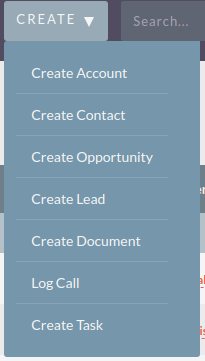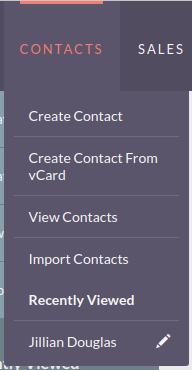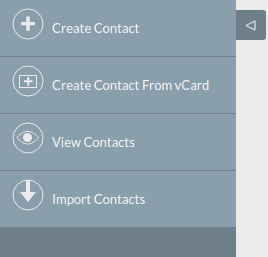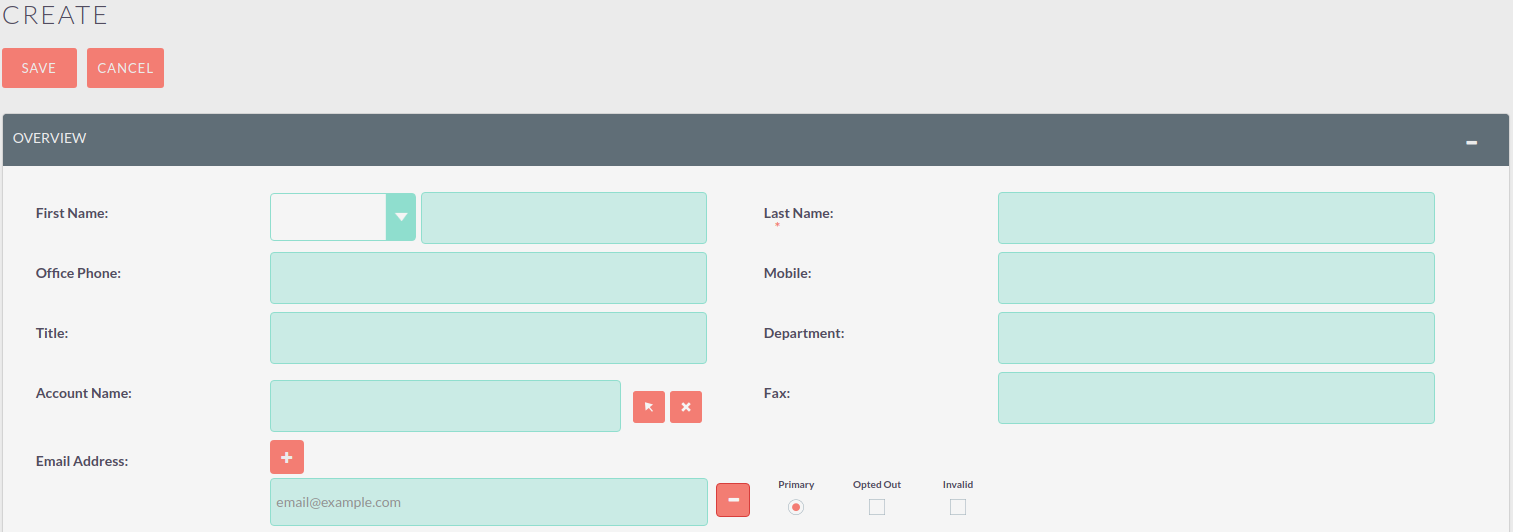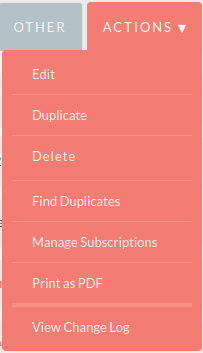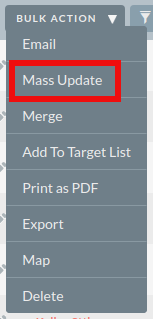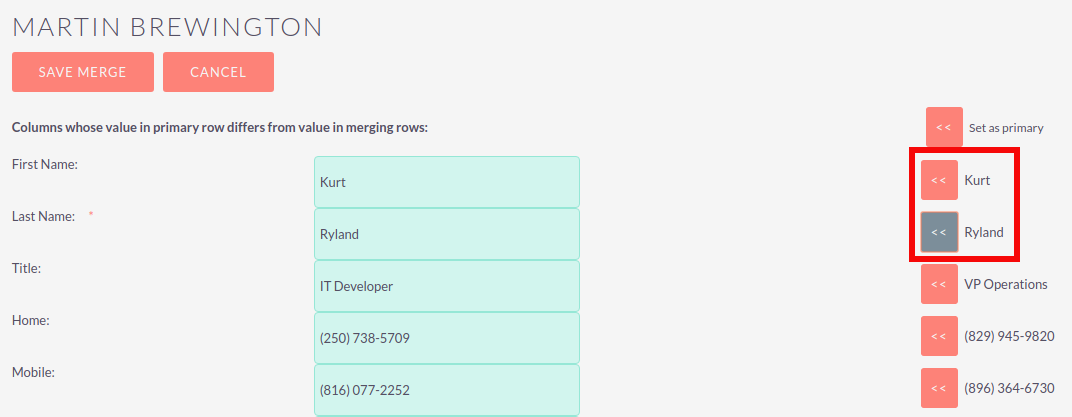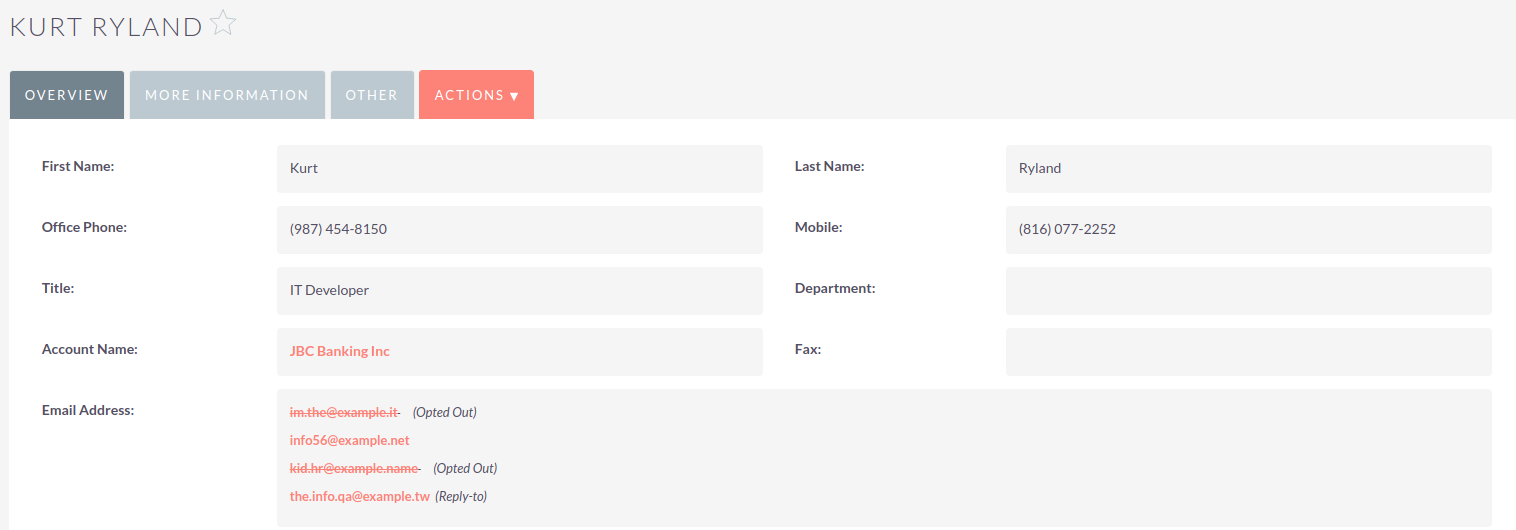Record Management
In this section we will cover all areas of record management so that you can efficiently store and manage customer data.
Creating Records
You can create records within each module from various different locations of your CRM;
Once you click the create option, you will be presented with a screen similar to the Edit View that we have covered previously.
This screen allows you to enter the appropriate data for the record. Fields with
the red star * are required fields. Validation is performed so that a
record cannot be saved within the CRM unless data is valid for required
fields.
Once you have populated all data for the record, choose the Save button, where you will be redirected to the Detail View of the record you have just created.
Editing Records
You can edit records from various different areas of your CRM, as per the following;
Once you click the edit option, you will be taken to the Edit View. Fields with the red star(*) are required fields. Validation is performed so that a record cannot be saved within the CRM unless data is valid for required fields.
Once you have edited/populated the record data, you can save the record and will be redirected to the Detail View of the record you have edited.
Deleting Records
You can delete records within modules from both the List View and Detail View.
Detail View Deletion method
To delete a record from the Detail View screen, choose the Delete option from the Actions drop down menu;
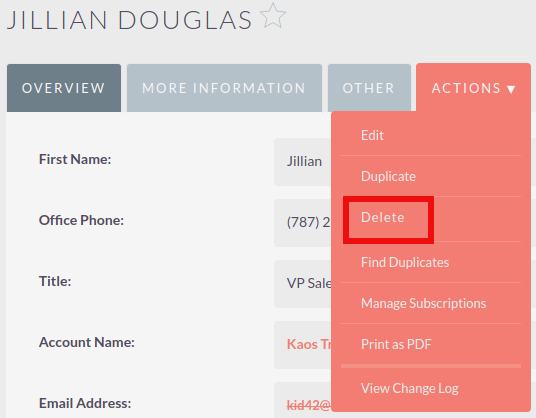
When you click the delete option, you will receive a popup which will ask you to confirm that you want to delete the record.
Clicking Cancel will revert you back to the Detail View of the record and will not delete it. Clicking OK will action the record deletion. If you choose to delete the record, the record will be deleted and you will be redirected to the module List View.
List View Deletion method
To delete records from the List View, you can select records using the checkbox option on the left hand side of the view. It is possible to select individual records or using the checkbox column header, choose the 'Select this Page' or 'Select All' options, to select all records from the page or all records within the module.
Once the records are selected to delete, click the 'Delete' button which will display a popup showing the number of records being deleted. You will be asked to confirm that you want to delete the record(s).
Clicking Cancel will revert you back to the List View and will not delete them. Clicking OK will action the record deletion. If you choose to delete the record, the record will be deleted.
Mass Updating Records
You can mass update records from the List View of any module, given this option is made available to you.
To mass update records, you have to select the records in the List View by using the checkbox to the left hand side, and then from the Bulk Action drop down menu, select the 'Mass Update' option.
Clicking the mass update option will display a screen at the bottom of the List View, which will list all fields that can be mass updated by you.
Once you have populated the fields you wish to mass update, you can either click Update or Cancel. Cancelling the mass update will cancel any changes and redirect you to the List View of the module. Clicking update will update all selected records with the changes specified.
Merging Records
You can merge records from the List View of any module, given this option is made available to you, or via the Detail View if you follow the 'Find Duplicates' process.
To merge records, you have to check the records in the List View and then select the 'Merge' option from the Bulk Action dropdown menu.
Once you have clicked on the 'Merge' option, you will be presented with a merge screen. This will show the primary record and the duplicates that you wish to merge with that primary record.
You can select which record is primary using the 'Set as primary' button on the right of the merge view. You can move data from the duplicate records to the primary record using the << buttons. In this example, we have moved the First Name and Last Name from the duplicate record to the primary record.
Once you have made the required changes on the merge screen, you can click Save Merge or Cancel. Clicking cancel will discard the merge changes and will revert you to the List View for that module. Clicking 'Save Merge' will continue the Merge process and will prompt you that the duplicate record will be deleted.
You can click 'OK' or 'Cancel'. Clicking Cancel will discard the merge changes and will revert you to the List View for that module. Clicking 'OK' will save the merge and will redirect you to the Detail View for the merged record.
As can be seen from the example, the merge has completed successfully. The First Name and Last Name have been updated, and all other data has been retained.
Importing Records
It is possible to import data easily by using SuiteCRM’s easy-to-use User Import Wizard. There are many hints and tips as you progress through the Import Wizard on the requirements of importing data and for further steps in the Wizard.
User Import Wizard features
There are many features of the Import Wizard which make it easier for you to map data to CRM fields and also for future imports. These are:
-
Sample .csv file for easier import of data — Use the available sample .csv file as a template for import of files
-
Retain settings from previous imports — Save/preserve import file properties, mappings, and duplicate check indexes from previous imports for ease of current data import process
-
Ability to accept both database name and display labels of drop-down and multi-select field items — Field labels as well as database names are accepted and mapped during import, but only the field labels are displayed for ease of use
-
Ability to accept both usernames and full names in user fields during import and export of data — Full names of Users displayed for Assigned To and other User-related fields in exported .csv file for easier identification of user records
-
Ability to auto-detect file properties in import file — Upload import files without specifying file properties such as tab, comma, double and single quotes, date and time formats, making the process simpler and faster
-
Ability to import contacts from external sources such as Google — Ability to import Google Contacts for person-type modules such as Contacts, Leads, and Targets, relate SuiteCRM records to Google Contacts, and communicate with Google Contacts from within SuiteCRM
Steps to Import data
Always import the Account data first and then import Contacts and other data related to Accounts (such as Meetings, Calls, Notes) to automatically create a relationship between the imported Account and Contacts and activity records related to the Account.
Follow the steps listed below to import data for a module, such as Accounts:
-
Select Import from the Actions drop-down list in the module menu options.
-
This displays Step 1 of the import process with a link to a sample Import File Template.
-
Upload your import file to this page using the Browse button in the Select File field or,
-
Optionally, download the available template, delete the existing data, input your data and upload to this page using the Browse button.
-
Click Next.
-
This displays Step 2 (Confirm Import File Properties).
-
Auto-detection of imported data takes place at this step.
-
Click View Import File Properties button to verify and change the data as needed, if you notice irregularities in the Confirm Import File Properties table.
-
Click the Hide Import File Properties to collapse the panel.
-
Click Next.
-
This displays Step 3: Confirm Field Mappings.
-
The table in this page displays all the fields in the module that can be mapped to the data in the import file. If the file contains a header row, the columns in the file map to matching fields.
-
Check for correct mapping and modify if necessary.
-
Map to all of the required fields (indicated by an asterisk).
-
Click Next.
-
This displays Step 4: Check for Possible Duplicates.
-
Follow the instructions on this page.
-
Step 4 also provides the option of saving the current import file properties, mappings, and duplicate check indexes for future imports.
-
(Optionally) Save the import settings.
-
Click Import Now.
-
Click the Errors tab to check for errors in the process. Follow the instructions to fix problems (if any) and Click Import Again.
-
This displays Step 1 of the import process.
-
Follow all the steps in the wizard through Step 5.
-
If the import was successful, you can to view all the imported records at Step 5.
-
Click Undo Import if you are not satisfied with the imported records,
-
Or, click Import Again to import more data
-
Or, click Exit to navigate to the List View page of the module that you imported your records into.
Exporting Records
You can export SuiteCRM records in .csv format. When you export records from the CRM, you will be provided with the .csv file to download when the export has finished executing. You can save and open this file in applications such as Libre Office Calc or Microsoft Office Excel.
The .csv file displays in a tabular format with columns and rows. When data is exported from the CRM, the record ID is included with all other fields that are specified in the export list for that module. You can then use the record ID as a reference for performing a 'Create new records and update existing records' import, as detailed in the Importing Records section of the user guide.
When exporting values from drop-down lists, SuiteCRM exports the ID associated with each option and not the display labels. For example, if a drop down list has options labelled High, Medium and Low with an ID of 1, 2 and 3 – the .csv file will show the drop down options as 1, 2 or 3.
Steps to Export Records
-
Select the records from the List View on the module’s home page.
-
Select Export from the Actions drop-down menu in the List View.
-
To export all records listed on the page, click Select located above the item list and select one of the following options:
-
This Page. To export all the records listed on the page, select this option.
-
All Records. To export all records on the list (if it is more than a page long), select this option.
-
This displays an Opening.csv dialog box.
-
Select Open to open the export file in .csv format or select Save to Disk to save the .csv file to your local machine.
-
Click OK to execute the operation. If you chose to open the file, the csv file opens in Microsoft Excel.
-
The file contains all the fields in the module from which you are exporting the data.
